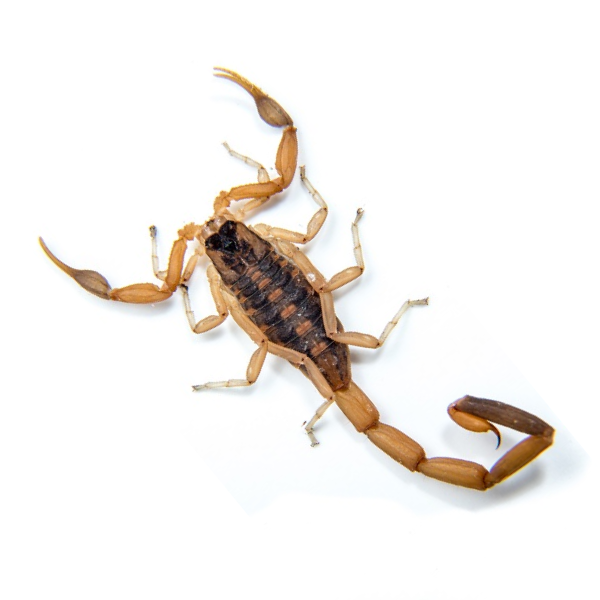Striped Bark Scorpions in St. Louis
The striped bark scorpion is the most common scorpion in St. Louis. They can be found inside and outside, under rocks, logs, and decaying organic matter. They are named for the striped colorations on their bodies that help them blend in with their surroundings.
Striped Bark Scorpion Habitat
Active foragers, striped bark scorpions do not burrow. These scorpions are often associated with dead plants, fallen logs, and human structures. Outdoors, they are often found under rocks, logs, and debris. “Bark scorpions” get their name from their love of dead vegetation like decaying logs. Excellent climbers, striped bark scorpions are found in attics, and on ceilings and walls of homes. They remain sheltered in the daytime and become active at night.
Striped Bark Scorpion Behaviors, Threats, or Dangers
The sting of a striped bark scorpion is not venomous, but it can be extremely painful. The affected area will swell, itch, and be painful for several minutes to several days. If you are stung, wash the affected area with soap and water immediately. To relieve pain and swelling, apply a cold compress. If symptoms become severe, you may be having an allergic reaction and should seek medical attention immediately. If you are noticing an excess of striped bark scorpions near your property, it’s best to consult your local pest control experts.


